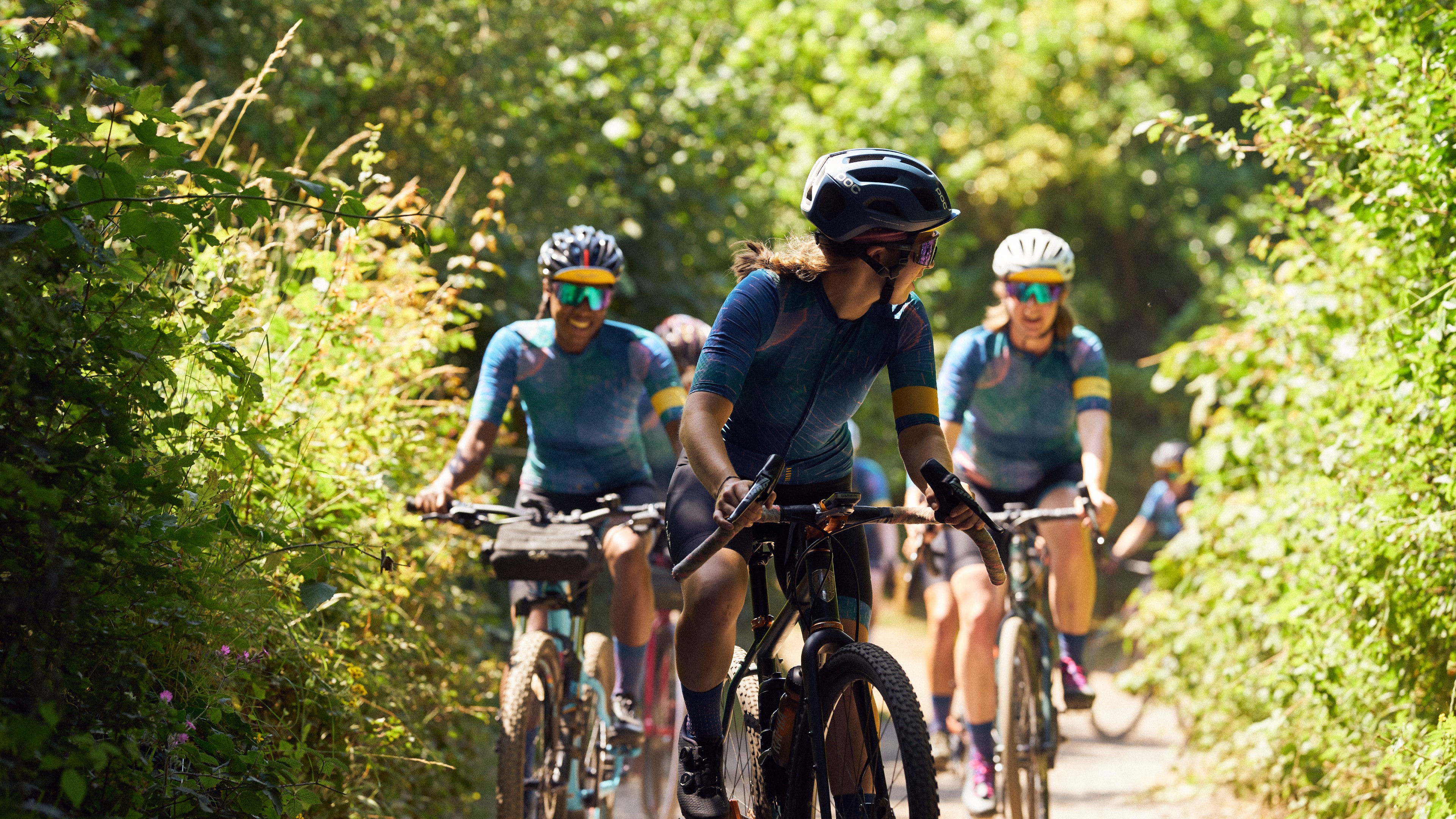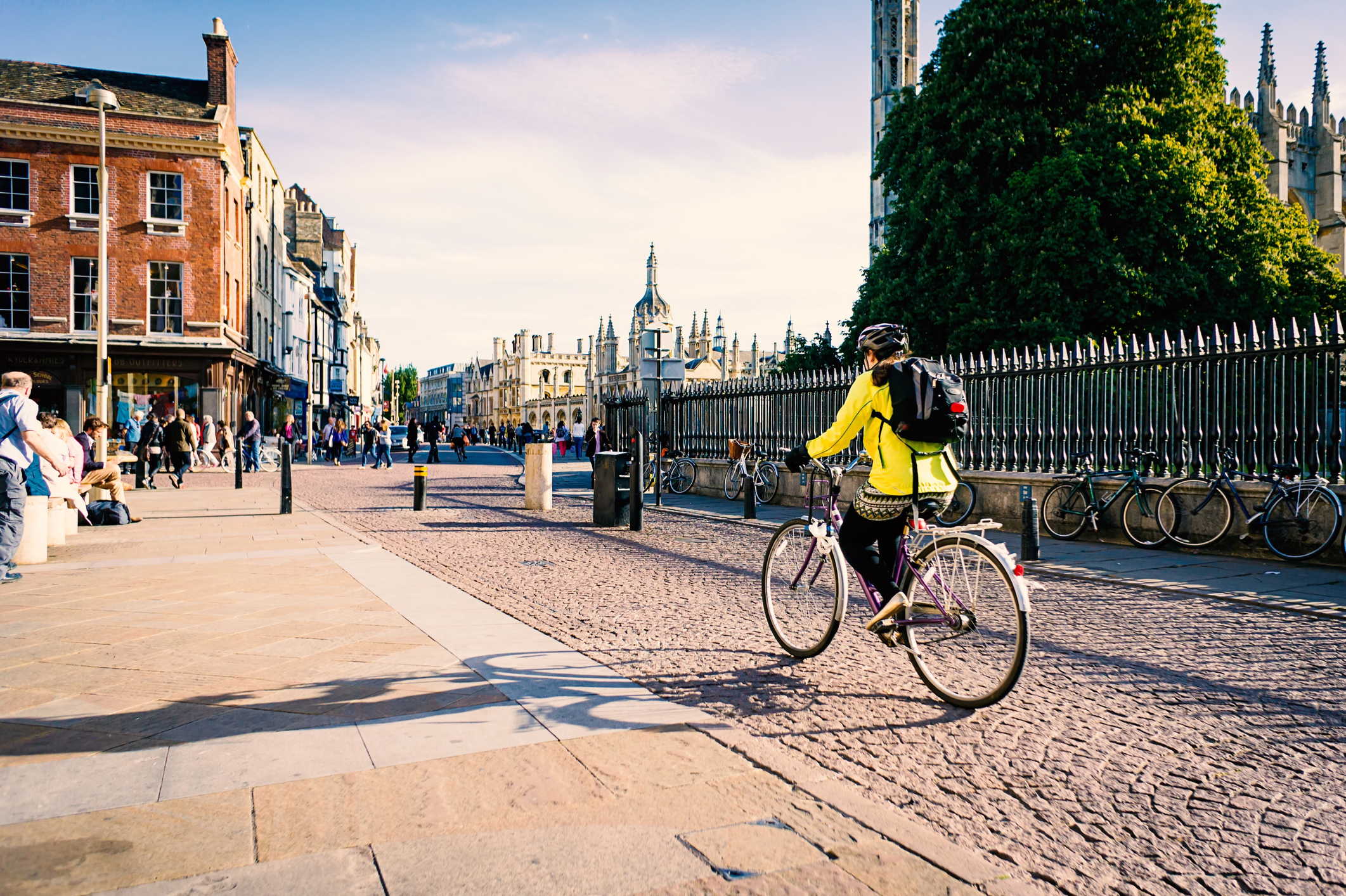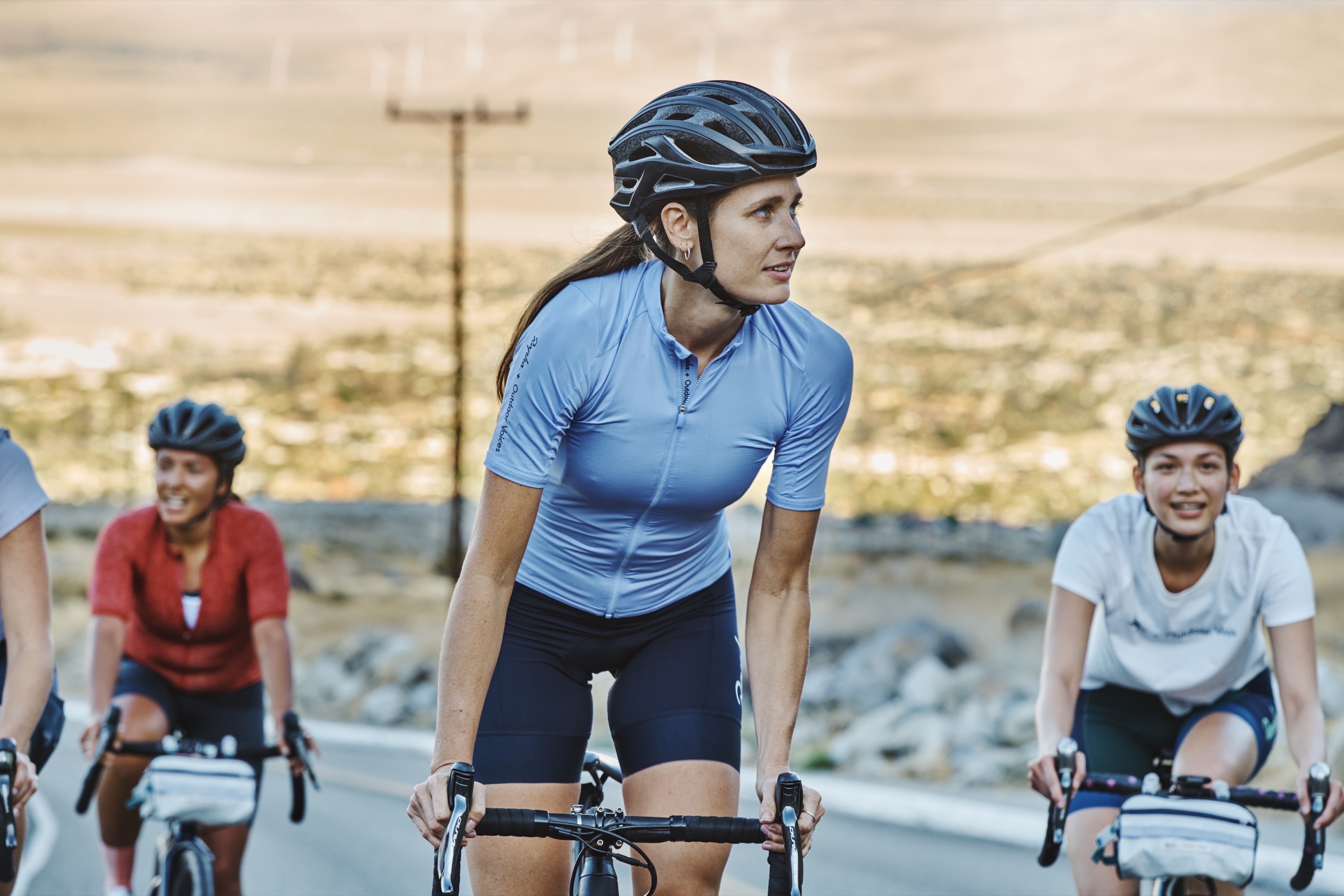Was the women's cycling boom of Covid lockdown about more than quiet roads?
The decrease in automotive dominance had a greater effect than any initiative we've seen before, but the closing of the gap continued long beyond the return of pre-pandemic traffic levels


After decades of asking ‘how do we get more women cycling?’, in the end, it was a global pandemic that showed us the way.
Statistics published by the Department for Transport (DfT) reveal a 56% boost in women’s cycling journeys over the course of 2020, compared to a 12% rise among men.
In the US, stats produced by the National Bicycle Dealers Association (NBDA) found that just over half of all female cyclists began pedalling within the last two years.
These numbers are unprecedented, considering cycling's historically male-dominated fanbase, in both the UK and the US. Most cyclists want to see more people discover the benefits of cycling, and tapping into the previously disinclined 50% of the population feels like a good place to start. But before we can answer 'how', we're going to need to get out heads around the 'why' of this lockdown launchpad for women's cycling.
Traffic slow down
What do the stats show us?
Strava’s 2020 Year in Sport review cited a 45% increase in cycling activities uploaded by women aged 18-29, and a 25% rise from women of other age groups - this compared to a 10% increase in men’s activities.
UK retailer Sigma Sports told us that its female audience rose by 33.5% in 2021 vs 2020, “outperforming the revenue lift from men,” with sales to female customers at 23.5% in 2021 vs 20% in 2020.
Specialized UK cited a 53% increase in the proportion of women visiting its website, between 2019 and 2021.
Women’s cycling retailer VeloVixen said its turnover trebled in 2020 vs 2019, and that this grew a further 18% in 2021.
Zwift’s women’s userbase grew by 2.8x in Jan 2020-Jan 2022, vs 2.3x for men.
Cycling Weekly’s traditionally male audience was 27% female in 2021, vs 25% in 2020, up from 20% +/-1 between 2017-2019.
Before we go on - a caveat: we're dealing with averages here, making generalisations par for the course. I bought my first road bike aged 21 and I genuinely don't recall being afraid of the road, whilst my dad bought an e-bike in his 60s, prompted by pop-up segregated bike lanes. Data suggests some strong trends, but that doesn't mean to say that we all fall into line.
Lockdown measures over the course of 2020 made for quieter roads, with car traffic down by 21% in the UK.
Countless surveys have shown that women are more likely than men to be deterred by traffic.
The latest race content, interviews, features, reviews and expert buying guides, direct to your inbox!
The volume of cars on the road, however, returned to pre-pandemic levels as early as summer 2021. And yet the uptick in female participation appears to be ongoing.
For many women, it seems, that brief period of respite from the roar of heavy goods vehicles was all it took. Women like Dr Trudy Kearney, who took up cycling when “the roads were empty” and she could “explore London safely, legally and breathing some of the freshest air” she’d tasted for years.
Educational Psychologist Kearney now owns four bikes, and is up at 5.30am each day to ensure she gets her pedal fix. Over summer, she rode the length of the country, completing Lands End to John O’Groats.
“I genuinely cannot believe the positive impact that cycling has had on my life. As well as making lifelong friends through the [cycling] club, I have somehow ended up on the committee as Women’s Co-Race Captain,” the 34-year-old told me.
Brixton’s Sarah Berry lived with five cyclists, but didn’t ride herself, until her local authority introduced a low traffic neighborhood (LTN). It's perhaps unsurprising that a high proportion of the women who got in touch with Cycling Weekly, to discuss their newly found cycling enthusiasm, were riding in London - where traffic cutting LTNs were prevalent.
“I said to myself ‘this is literally it, if you can't do it under these conditions, you're never going to be able to do it.’ So, I gave it a go,” the 30-year-old recalls.
“I was so nervous on that first day that I sort of walked [the bike] home, I wouldn't even ride at home until I got to the park.
“But from that point on, I found that it was just much easier to ride and much less frightening to ride on roads than I had anticipated.
“The experience of actually riding a bike, with traffic, was much less scary than it looked. It took me two to three weeks to go from only riding the bike in the park, to only riding in the early mornings or late at night, to being comfortable riding 10 miles from Brixton to Kingston on Thames,” Berry says.
Part of learning to feel confident on the bike was about unlearning social norms.
“As a woman, I feel like I've been taught two lessons in my life that I've been trying to unteach myself,” Berry says. “One is about being inconspicuous, staying out of the way, the other one is not taking up space. To cycle effectively, you really have to be conspicuous, and you really have to take up space. So I think pushing against those things is important.”
The drive for better infrastructure

Whilst traffic has returned to pre-pandemic levels, there are changes afoot that could help to keep the trend alive.
Revisions to the highway code, for example, should have a “positive impact” according to CEO of charity Cycling UK, Sarah Mitchell.
Low traffic neighborhoods introduced in cities have remained, ditto pop-up cycle lanes, though some councils have made attempts to remove them.
“Ultimately we know that what will really make a difference will be safe cycling infrastructure,” Mitchell added. “With the elections coming up this May, the onus will be on local decision-makers to commit to providing the infrastructure needed.”
The growing number of female cyclists includes at least one member of parliament. MP for Chatham and Aylesford, Tracey Crouch, calls herself the “classic example” of a lockdown beginner. The 46-year-old bought a bike in 2020 “and really loved it.” Her enthusiasm, she says, was “helped by the low traffic, it was something I was really nervous about.”
Feeling confident on the road
Several of the women we spoke to said that cycling on the road looked much scarier than it turned out to be. However, there are some simple tips that can help you to feel more confident.
CyclingUK has put together 10 Tips for Cycling In Traffic, starting with learning to leave adequate space between yourself and the kerb, and anticipating hazards to put yourself in control.
There are also plenty of adult skills cycling sessions around. An hour spent riding with a qualified instructor can make all the difference - ask your local authority about resources near you.
Crouch’s story is even more inspiring when it transpires that she was diagnosed with cancer just months after purchasing her first road bike; “I had to have two lumpectomy operations, and in between them, I cycled 100 kilometers for charity. It gave me something to keep focused on, and to keep fit,” she relays, matter-of-factly.
"Some places feel much safer to ride than others, I think some of those places - ironically - are cities,” Crouch notes, admitting “here in Kent, the roads are woeful.”
With advocates for cycling in Westminster, and Chris Boardman the newly appointed commissioner of Active Travel England, there’s space for cautious optimism.
“He’s brilliant,” Crouch said of Boardman, who transformed the streets of Manchester in his role as transport commissioner for the area. “I think what he's done in Manchester is something that I would hope to see across the board.”
Some of the new cycling recruits will be keeping a close eye on progress. Georgia Williams, 26, bought her first bike in July 2020, in a bid to take advantage of quiet roads and escape public tranport. Now, she's the deputy coordinator for the Westminster Cycling Campaign.
"I am a total cycling convert and evangelist now. I don’t want to go anywhere if I can’t bike there, as every other way of transport seems unpleasant and slow now," she says, with effervescent enthusiasm.
"There is strong evidence that more protected bike lanes alone can get more women cycling. Make cycling a safe, and attractive alternative to the car!" Williams proclaims, and whilst data shows us this has the greatest effect among women, no doubt it spells good news for bike curious men, too.
Clawing back time

Whilst quieter roads have acted as a petri dish for new converts to cycling, no multi-decade conundrum has only one answer.
Falling numbers of car journeys don’t explain why women’s only cycling retailer VeloVixen has seen a “boom” in gravel bike and mountain bike clothing sales, according to co-founder Liz Bingham. A decrease in automotive dominance does not explain why the indoor cycling app Zwift has seen its women’s user base increase from 14% to 18% over the course of the last two years.
Hobbies across the board saw a surge in interest during Covid lockdowns. With many people working from home, time-sapping commutes were eliminated, which provided a leisure time boost for many.
This clawback of time may have influenced the female half of the population more; data shows that women have around five fewer free hours than their male counterparts, per week, both in the UK and the US.
“I think that we have a really equal household, my husband does a lot, the cooking and washing. But he still has more leisure time,” Crouch tells me, citing parental care and housework as key factors.
“Drawing a little bit on my own experience, lockdown meant that whilst I was still busy, I was quite home-based. And therefore, I had a bit more flexibility in time for exercise.”
With the world opening up more, certainly in the UK and the US, how can we keep these women cycling as work/life/care balances return to 2019 levels?
Former Sports Minister Crouch admits that the question “always used to perplex” her.
“How do we create something that enables women to fit cycling into their really busy lives? There are some amazing voluntary cycle groups, but they’re not quite appealing enough for younger women, as they often either run during the day when you’re working or at the weekend, when you have childcare.
“Now, if you’re leading a busy life and you want to keep your fitness levels up, you might go to a spin class. How do you then transfer that into outdoor cycling?” she asks.
Short of campaigning for greater equality in unpaid labour, the answer might lie in regular cycling club rides which better accommodate lower levels of leisure time - and - since British Cycling research showed that 64% of women picked out a lack of self-assurance as a personal barrier, lower levels of confidence.
Oxford's Cowley Road Condors, for example, is striving for a 50/50 gender split, and at last count, they had achieved a 33% female membership. The club organises monthly 'Meet the Condors' rides, as well as mid-week spin classes, and specific 'skills' rides. Kent Velo Girls announce their target demographic within their name and regularly host shorter weekend rides as well as endurance outings.
Snowballing communities
Capturing the market
Co-founder of women’s cycling retailer VeloVixen, Liz Bingham, gave us the lowdown on where the low-hanging fruit lies - and how to reach it.
"It’s been interesting to see how the proportion of customers choosing budget options as a practical way to get on a bike has shrunk in 2021. More aspirational brands have benefitted, as some of the 2020 newcomers look to upgrade their kit.
"Gravel has certainly boomed. MTB is also increasingly popular. The common theme is the ability to ride with no security issues, as well as the scenic/social element. Indoor cycling has been hugely popular during lockdown.
"We’re seeing a move from suppliers towards a more discipline-agnostic approach to which clothing works for which kind of cycling. The traditional insistence that ‘this is a road jersey, this is an MTB jersey’ is becoming less pronounced. A female customer will often value versatility and practicality over a dogmatic insistence on using kit in a particular way.
"Fitting cycling practically into a busy and varied life is a big priority for many [women], as well as getting the chance to ride and spend time with friends. More adaptable clothing and riding in more sociable locations are the by-products of this."
Our final, and favourite, hypothesis is that the initial jolt to women’s participation has provided the instigator to a rapidly snowballing community.
“Social media being so heavily used during the pandemic may have helped,” suggests Rapha’s Jess Morgan. Speaking in her personal capacity, but with experience overseeing campaigns such as the Rapha Women's 100 in the UK, and contributing to its new women's Instagram handle, she added: “Women sharing their positive cycling experiences on social media might have had a ripple effect through non-cycling communities, where one or two women take up cycling and make it look accessible and fun, which encourages more to join them or give it a try.”
Zwift’s Director of Women’s Strategy and Content, Kate Veronneau, puts a lot of the brand’s success in growing its female participation down to creating a “strong women’s community” through clubs, teams, women’s social rides and programmes such as the very competitive Zwift Academy, as well as the pre- and post-natal training programs for moms-to-be and new moms.
Zwift is doing a lot to grow women's representation at the elite end, too, sponsoring the Tour de France Femmes and insisting on total parity at the E-Sports World Championships from its inaugural edition. Representation matters, but it's not a Covid factor, and a story for another day.
“I believe that through the pandemic, women especially appreciated the social motivation and connection on Zwift,” she told Cycling Weekly. “Women also tend to use more social channels and communication to spread the word, share experiences and motivate each other.
“I believe that women's cycling will continue to grow at a faster rate because women are so incredible when it comes to encouraging and supporting each other in what can be an intimidating or isolating sport.”
The encouraging and supportive nature of bike riding circles isn’t always abundantly clear from the outside. Despite having a partner, and five housemates, who rode bikes, Brixton's Berry didn’t feel the warmth of the cycling community until she found herself enveloped.
“I was a bigger woman, I was bigger than my partner and my housemates, they were all generally a lot more sporty than I was, they were a bit more body confident and adventurous. [Cycling] just felt like it was something I was never going to be able to do, or that I would have a good time doing,” she explained.
“I was never invited to imagine myself as someone who might be a cyclist or might enjoy cycling. I wasn't involved in that community. And that community didn't really seem to mind.
"The low traffic neighbourhood meant I started to see more women cycling and more bigger women cycling. And when I did start [riding myself], I was really surprised at how overwhelmingly welcoming, and excited, the cycling community was, just to have one other person who had found the joy of riding the bike.
“I think when you're outside of it, that really doesn't come across.”
The action point for cyclists wishing to see more women take to two wheels is clear, but Veronneau underlines it eloquently. “Create inclusive, welcoming spaces for women,” and they will come.
Michelle Arthurs-Brennan the Editor of Cycling Weekly website. An NCTJ qualified traditional journalist by trade, Michelle began her career working for local newspapers. She's worked within the cycling industry since 2012, and joined the Cycling Weekly team in 2017, having previously been Editor at Total Women's Cycling. Prior to welcoming her first daughter in 2022, Michelle raced on the road, track, and in time trials, and still rides as much as she can - albeit a fair proportion indoors, for now.
Michelle is on maternity leave from April 2025 until spring 2026.
